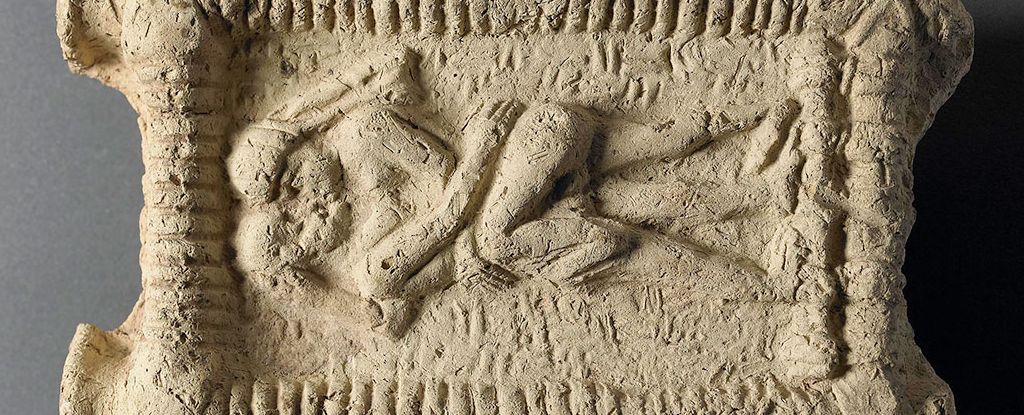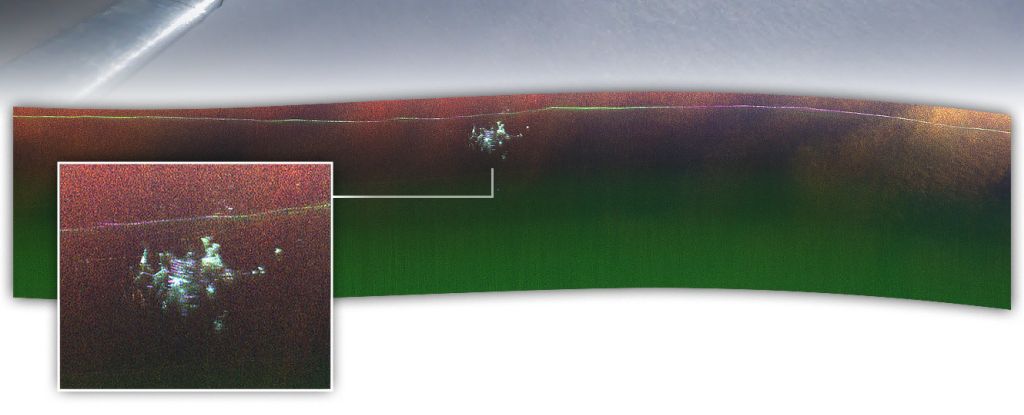A new deep dive into the history of mankind’s romantic kissing has revealed that locking lips has a more complex history than some researchers suggest.
While snogging your loved one may not be a purely human pastime, not all cultures do it, leading to speculation about the behavior occurring in select locales before spreading like the latest dance trend.
According to Assyriologist Troels Pank Arbøll of the University of Copenhagen in Denmark and biologist Sophie Lund Rasmussen of the University of Oxford in the UK, suggestions that kissing emerged in some places like India before it spread elsewhere are not supported by the larger numbers the evidence.
It has been generally accepted for some time that the earliest written records of romantic kissing come from the Hindu Vedic Sanskrit texts and are dated to around 3,500 years ago. The late anthropologist Vaughn Bryant used this representation This suggests that the generals of Alexander the Great started the fad after their conquest of Punjab in 326 BC. could have brought with them.
But even if that were the case, Arbøll and Rasmussen point out that the earliest known record of the Romantic expression is in Egypt and Mesopotamia some 4,500 years ago, at least 1,000 years before its appearance in Vedic Sanskrit writings.
Similar, an article published last year speculated about the rise of herpes simplex virus 1 (HSV-1), the pathogen responsible for cold sores, could help trace the cultural transmission of kissing some 5,000 years ago.
“There is evidence that kissing was a common practice in ancient times and may have had an ongoing impact on the spread of orally transmitted microbes such as HSV-1.” Arbøll and Rasmussen write in their work.
“It therefore seems unlikely that kissing would have emerged in other modern societies as an immediate behavioral adaptation that would have inadvertently accelerated disease transmission.”
Unraveling the history of romantic kissing is difficult, and experts disagree on whether it’s learned or instinctive. We know kissing is certainly not just for humans; Bonobos and chimpanzees kiss. On the other hand, previous research has found that romantic kissing plays a role not universal among humans. The same research also found that the more socially complex a culture is, the more romantically its people kiss.
While adults kiss their children, it is often harder to decipher in historical records how adults kiss each other for sheer pleasure. According to Arbøll and Rasmussen, references to romantic kisses can be found in the earliest Sumerian texts from 2500 BC. BC, which are described in connection with erotic acts, with special emphasis on the lips.
“In ancient Mesopotamia, which is the name for the early human cultures that existed between the Euphrates and Tigris rivers in modern-day Iraq and Syria, people wrote in cuneiform on clay tablets. Many thousands of these clay tablets have survived to this day.” , and they contain clear examples that in ancient times kissing was considered part of romantic intimacy, just as kissing could be part of friendships and relationships between family members,” Says Arboll.
“Therefore, kissing should not be viewed as a custom that originated and spread from a single region alone, but rather appears to have been practiced in multiple ancient cultures over several millennia.”
Possibly kissing has existed for much longer. An essay from 2017 Dive into the genomic data of the oral bacteria found in the mouth of Neanderthals found that some oral microbes were transmitted between humans and Neanderthals about 126,000 years ago. It’s far from conclusive evidence of sexy smooching, but it’s not nothing either.
prehistoric sculptures 11,000 years ago in the Middle East and in Neolithic in Malta Up until 5,000 years ago, kissing people seem to have been depicted during erotic acts.
That’s not to say that kissing hasn’t historically played a role in the spread of disease. It probably did. Arbøll and Rasmussen note that medical texts from ancient Mesopotamia describe a disease that sounds very similar to HSV-1 and affects some of them today 3.7 billion people worldwide.
“It is . . . interesting to note some similarities between the disease known as Buʾshanu in ancient medical texts from Mesopotamia and the symptoms caused by herpes simplex infections.” he says. “Bu’shanu disease was primarily located in or around the mouth and throat, and symptoms included blisters in or around the mouth, which is one of the predominant signs of herpes infection.”
However, the authors emphasize that the differences between how diseases were interpreted in the past and how we see them today mean researchers must be careful when using ancient medical texts to trace other cultural practices.
This combined evidence makes it difficult to interpret, based on the records currently available to us, that kissing plays an essential role in the development of any particular disease or strain of disease. That’s not to say kissing never played a role… but investigating that role should be a collaborative effort involving various experts.
“The debate about kissing as a vector of disease transmission” write the researchers“Explains the benefits of an interdisciplinary approach to creating a holistic account of historical disease transmission through social interactions.”
Your article was published in Science.





